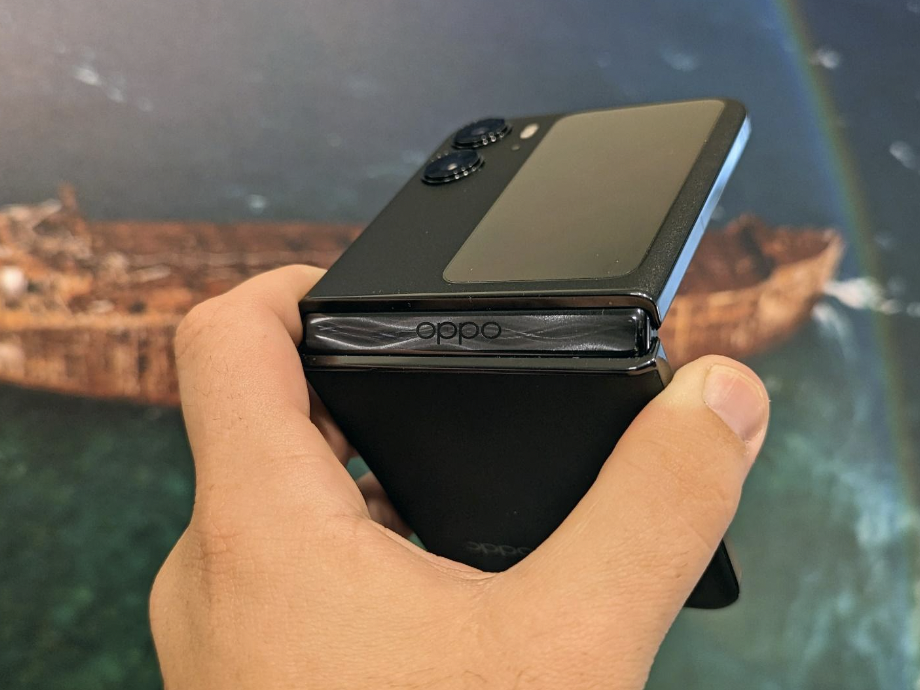I’ve had the opportunity to use Oppo’s Find N2 Flip foldable smartphone for the last few weeks. In fact, I have traveled around the world with it and taken it with me everywhere. It’s an incredible device.
The Find N2 Flip is also one of the first real flagship devices to use a MediaTek Dimensity 9000+ processor, so I wanted to see how that might affect the experience. The short version: it’s pretty good—but read on for the specifics.
In this article, I also want to situate this phone in the context of the market for foldable devices, which has been evolving to become a more competitive and compelling space.
Getting into the fold
The foldable market has grown considerably over the last few years, with Samsung and Huawei mostly leading the charge, but with a bevy of other OEMs like Xiaomi, Oppo, Vivo and Motorola right on their heels. However, consumers in the US only get to choose between Motorola and Samsung because Xiaomi, Oppo and Vivo aren’t entirely entering the US out of fear of what happened to Huawei. (If you haven’t been keeping up with this market, the short version is that Huawei was abruptly and publicly banned from the US market on the cusp of a major product launch at CES and has been put under sanctions among many other restrictions.) Notably missing from this list is TCL, which never launched its flip phone even after telling the world everything about it. Apple is also missing, which many people think is the main reason why the category hasn’t yet exploded, even though growth is healthy. Google is also rumored to have been working on a Pixel foldable, but that device has yet to come to fruition, either.
As the market matures and competition grows, we are starting to see the price of foldables come down to a much more consumer-friendly price point. The first foldable, the Samsung Galaxy Fold, had many compromises, and while it did make smartphones exciting again, it still had a prohibitive price point of $2,000—not to mention a fragile screen. Since then, Samsung has introduced its own Flip line of foldables, which I believe caters better to mainstream consumers by offering the foldable experience at a more affordable $999 price point.
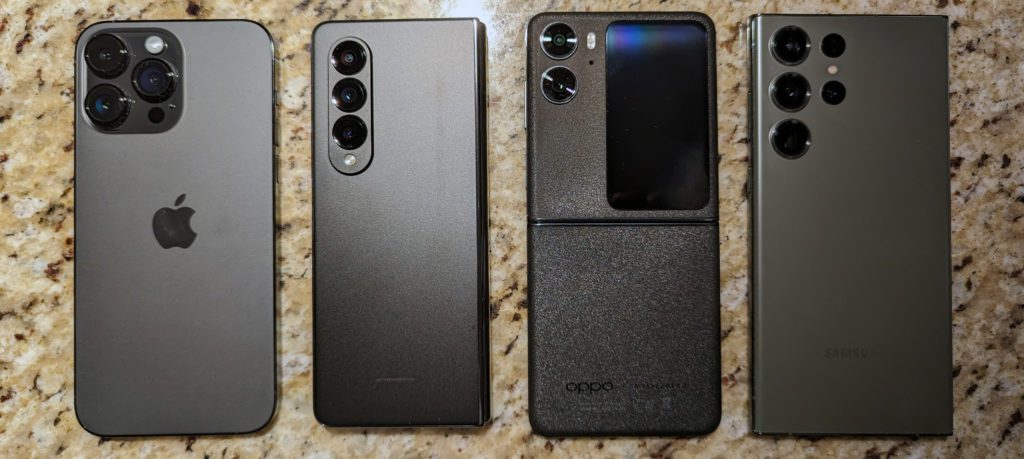
One key component of a foldable’s design is its mechanical hinge. This is where Oppo has impressed me the most with its foldables. The Oppo Find N was the first commercial foldable that I saw that didn’t have a crease, which all of Samsung’s foldables have. This didn’t translate to a fully invisible hinge on the Find N2 Flip, but it did enable a considerably less visible crease.
Oppo also clearly learned a lot from the Find N; the Find N2 Flip is equipped with many outstanding features such as an enormous outside screen, which serves as a great preview screen for selfies or for viewing notifications. I have also installed a third–party app, CoverOS, to maximize the capabilities of the cover display. As an aside, Google needs to do a better job of enabling widgets to be populated on the cover screen for all foldable Android devices. I don’t think it should be the OEMs’ responsibility to provide these capabilities; rather, it should be a Google OS–level capability to which developers can point their apps. All of that said, it is pretty clear that Oppo intends to eat Samsung’s lunch outside of the US when it comes to foldables, and perhaps it might eventually leverage one of its sub-brands such as OnePlus to do the same inside the US.
Design
The design of the Find N2 Flip is sleek, premium, well-crafted and fully deserving of the $1,000 price tag that you will find around the world. To put it another way, the phone has the proper shape, materials and design of a premium device without too much of a premium price. While there isn’t an under-screen fingerprint sensor as you’d find in many candy-bar phones, there is a fingerprint sensor under the power button, a popular design choice among foldable manufacturers. Also, how you hold the phone (right-handed) naturally has your thumb resting on the fingerprint sensor/power button combo. This allows you to unlock the outer cover screen and the inner foldable screen once you open the device. If left-handed, you would probably best enroll your index finger instead of your thumb.
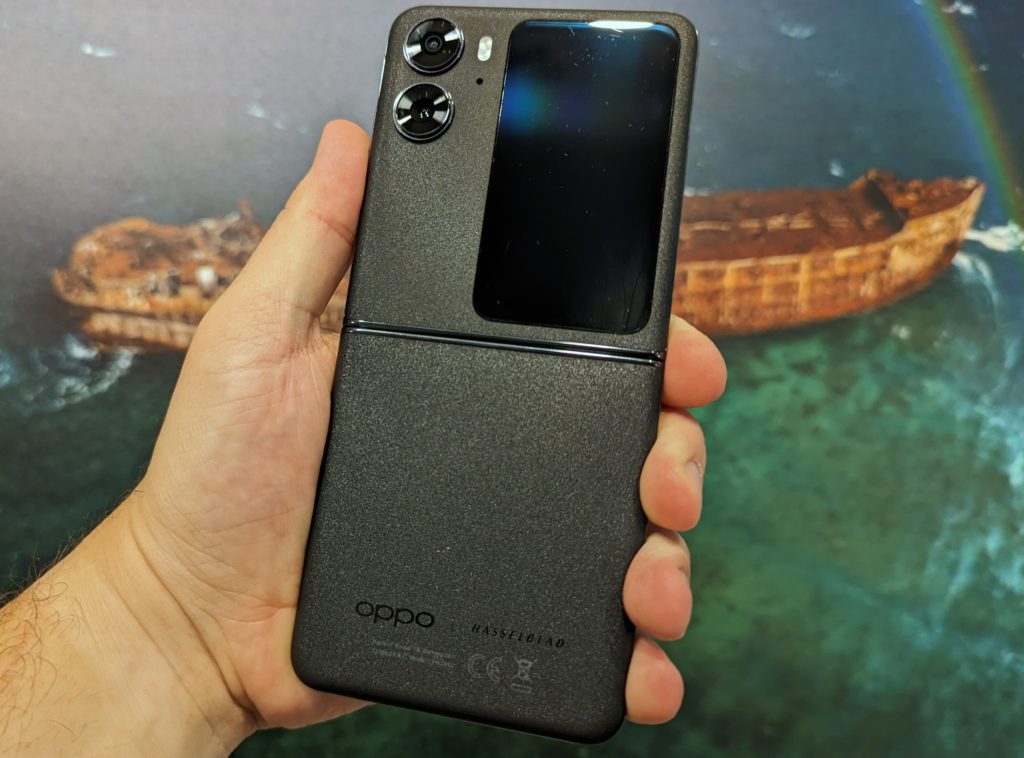
The phone features three microphones, two facing down and one facing up, which enables excellent calling and noise-cancellation performance. It also has stereo speakers, one hidden in the earpiece once unfolded and one firing downward next to the USB-C port. The phone features two main cameras facing outward and one inside selfie camera, which punches through the display. It would’ve been great to see Oppo implement an under-screen selfie camera here, but many of those today don’t have the best image quality. Samsung has it in the Fold4, and I don’t particularly enjoy taking selfies with that camera mostly due to the considerable reduction in image quality.
The main screen is a 6.8-inch display with a 2520 x 1080 resolution; the 3.26-inch cover screen display has a resolution of 720 x 382. The main screen also has a refresh rate of 120 hertz, while the outside cover screen has a refresh rate of 60 hertz. All of this fits into a roughly 7.45mm-thin device unfolded or about 16mm folded—all while weighing a paltry 191g.
Performance and user experience
The performance question was the most interesting for me because, as mentioned above, this is one of the first phones to use a MediaTek Dimensity 9000+ processor. This model also has 8GB of LPDDR5 RAM and 256GB of UFS 3.1 storage. The 9000+ isn’t MediaTek’s fastest chip; that crown goes to the Dimensity 9200, which you can find inside the new Oppo Find X6 and Vivo X90. (I expect we’ll see more devices later this year using that chipset.) However, the Dimensity 9000 can be found in many devices, and the 9000+ is merely a speed upgrade for that chip.
I checked out the performance of the Oppo phone across a multitude of benchmarks and found it to be on par with expectations. It performed about as well as my Samsung Galaxy S22 Ultra with a Snapdragon 8 Gen 1 inside and fell a bit behind all my single-core test devices on Geekbench 6 performance benchmarks. On the GPU side, it came close to last year’s Red Magic 7S Pro, which also uses a Snapdragon 8 Gen 1, and beat the S22 Ultra in the GPU score benchmark.
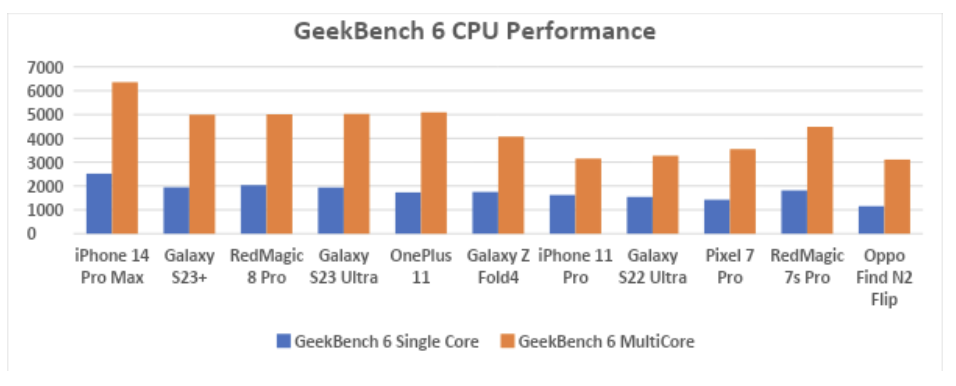
The Oppo also bested the S22 Ultra in 3DMark Wild Life Extreme, but this did not extend to the S23+ or S23 Ultra, given that both of those Samsung devices scored more than 50% faster than the Dimensity 9000+. It’s safe to say that the Dimensity 9000+ is very close to last year’s Snapdragon 8 Gen 1, which is still a powerful platform. Compared to the Snapdragon 8+ Gen 1 in the Samsung Fold4, the Oppo did not come close in any benchmark, with Geekbench multi-core performance being a solid 30% slower for the Dimensity 9000+. Since the Flip4 has a similar processor, it would suffice to say that the Flip4 does have superior performance. PCMark for Android indicated 40% lower performance for the Find N2 Flip in comparison with the Galaxy Z Fold4, which shows how much of a performance boost Qualcomm achieved between its Snapdragon 8 Gen 1 and Snapdragon 8+ Gen 1. Nevertheless, the Dimensity 9000+ performed roughly how I expected it would.
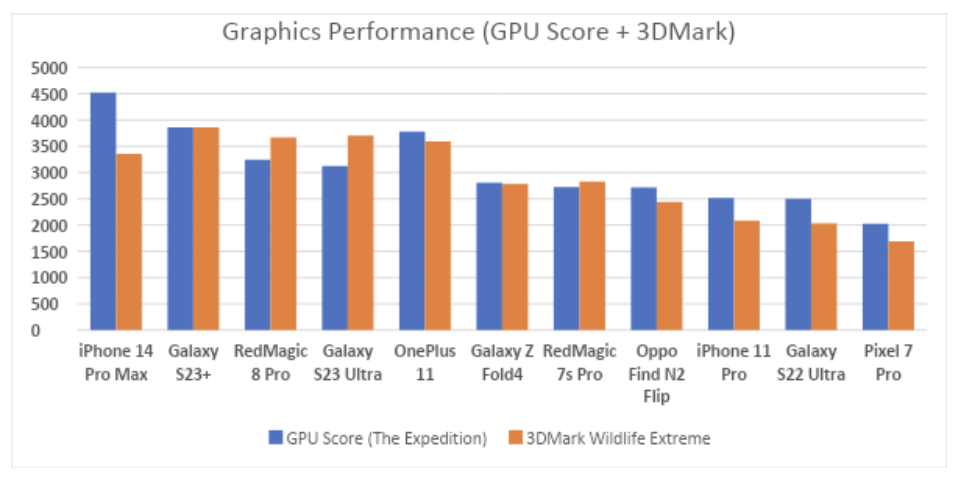
Regarding system responsiveness and stability, the Find N2 Flip was rock-solid, and I didn’t experience any noticeable bugs or crashes. I also haven’t run into any compatibility issues with any apps from the Google Play store, and I was impressed with the device’s compatibility with T-Mobile even though the phone doesn’t have Band 71 (600 MHz) support for good 5G coverage since T-Mobile is the only carrier to date using this band. With Band 41 support being more common and available on this device, I got 350–400 Mbps on Speedtest. However, not all models of this phone have the same band support, and I wouldn’t recommend using it on any US carrier without the appropriate carrier certification. The performance on Wi-Fi was on par with the rest of my Wi-Fi 6 devices, and the device never felt like it was running slow.
Regarding camera performance, the Find N2 Flip has only two cameras. Its primary camera uses a 50-megapixel sensor with an f/1.8 aperture and 86-degree field of view and an ultrawide-angle 8-megapixel sensor with an f/2.2 aperture and 112-degree field of view. The primary camera also shoots up to 4K video at 30 fps.
The camera responsiveness was on par with my expectations for a smartphone, and the low-light performance of the outside cameras was quite good, especially when shooting in night mode. I also appreciate the Hasselblad partnership with Oppo, as I’m a sucker for the X-Pan mode and love a good black-and-white photo which Hasselblad knows how to deliver well.

There is also a 32-megapixel front-facing camera for when the phone is unfolded into its full size, and while it seems to do a good job with selfies and to take advantage of the foldable hinge, I did find its low-light performance somewhat lacking. That said, it was enjoyable to set down the phone somewhere and activate a 3-second timer by simply putting out my hand and initiating the camera shutter sequence. While this feature did not always work, it did work most of the time. I also enjoyed using the cover screen and the main cameras to take selfies without opening the phone, which is a nice feature.
Battery-charging performance is also quite nice. The phone has a 4300 mAh battery, which isn’t the biggest; still, with 44-watt charging, the Oppo can achieve impressive charging speeds, something that competitors like the Galaxy Z Flip 4 cannot claim with their 25-watt charging. Unfortunately, the Find N2 Flip lacks wireless charging, something I’ve grown accustomed to with almost all of my phones.
Software and ColorOS
ColorOS is Oppo’s own flavor of Android; it comes with some of the essential utilities and pre-loaded apps, but not any apps that feel particularly unique. I don’t have any big criticisms of ColorOS or the software experience of the Find N2 Flip. That said, it also didn’t have much that was remarkably different from other devices. The phone comes pre-loaded with Oppo’s App Market, which differs from the Google Play Store but is mainly designed for countries such as China where Google Play Services might not be available. My biggest complaint is that there isn’t enough customization of the cover screen, so that apps like CoverScreenOS are needed to make the most of the cover screen display.
Durability and ease of use
I know that durability is always a question when it comes to foldables, but I can’t say that I am apprehensive about the durability of the Find N2 Flip. Oppo says that the hinge is rated for 400,000 cycles, which is more than enough to sustain the average life of a smartphone. I have yet to have any of the hinges on any of my foldables fail on me, and I expect that to continue. Being foldable does make the screen more susceptible to scratching, but that also hasn’t happened to me yet.
One thing to consider when using a foldable is how useful it is when the device is closed. This is something that Oppo clearly put a lot of thought into. One thing that I really enjoy about the Find N2 Flip is that it simply fits in places that my other phones don’t, like a shirt pocket. Additionally, I can comfortably fit my Find N2 Flip in the same pocket as my wallet, because they are both roughly the same size and shape. That said, I do think it should be easier to flip open the Find N2 Flip and that there should be some kind of a lip to make it easier to unfold the phone with one hand. This is a problem that candy-bar phones simply don’t have, and I’d like to see some progress on this so that a user doesn’t need two hands to open the phone. By contrast, closing the phone to end a call is still a highly satisfying experience, and I can’t recommend it enough—especially because I’ve been missing that experience since my high school days when flip phones were all the rage.
Wrapping up
The Oppo Find N2 Flip is a perfect example of what can be achieved within the market for foldable devices when there is healthy competition. The Find N2 Flip is Oppo’s first foldable that’s available outside of China, and it’s quite evident why the company would be so confident that the device will be successful.
While this isn’t a perfect phone, Oppo has done an incredible job and the Find N2 Flip has raised the bar for the whole foldable segment in ways that only Samsung has accomplished in the past. I expect that we will continue to see more foldables from even more Android OEMs this year, and perhaps Apple and Google will eventually realize their own foldable visions.
At $1,000 the Find N2 Flip is an incredible competitor to the Galaxy Z Flip4, even though it isn’t necessarily better than the Flip4 in every respect. We will also very likely see a Flip5 coming in the next few months. That said, The Flip5 now must deliver more than minor incremental improvements if Samsung wants to stay competitive in this new market.

